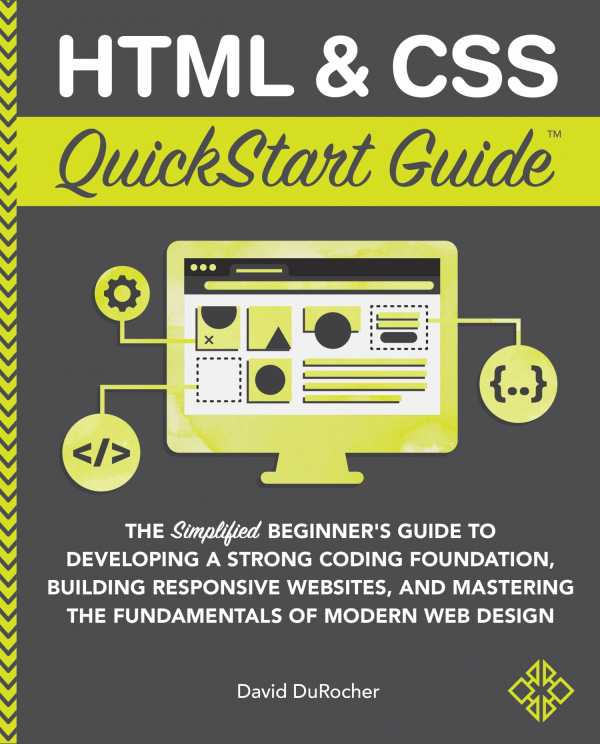HTML & CSS QuickStart Guide
The Simplified Beginners Guide to Developing a Strong Coding Foundation, Building Responsive Websites, and Mastering the Fundamentals of Modern Web Design
HTML & CSS QuickStart Guide is a great reference work for those learning to code and build websites.
David DuRocher’s computing reference book HTML & CSS QuickStart Guide has the potential to turn average internet travelers into developers and superusers.
Structured to help ordinary people understand the possibilities of do-it-yourself coding, this book explains the differences between HTML and CSS in everyday language, comparing the former to the blueprints of a home, and the latter to a design scheme. Its four parts move from overviews of HTML and CSS to deeper, hands-on advice for creating websites.
A brief, thoughtful history of HTML and CSS is delivered, with an eye toward capturing the evolution of both across years. Deeper considerations of HTML structure and its elements follow this; CSS is presented and explored in the same considered fashion before the book moves on to advanced topics, including superscript, and, later, work environments. Important topics, like workflow and specific programs, are covered in the same regimented, organized way, so that all material builds on ideas presented earlier in the book. Concise summaries conclude each chapter.
The guide includes access to a broken website that can be fixed by following its advice, incorporating exponentially more complex lines of code. It suggests tools like a text editor and editing software that are open source and easy to acquire. Downloadable access to all of the presented code is included, helping to keep the book approachable and its coding techniques easy to explore. An illustrative example walk-through of the steps involved in repairing a fictitious coffee shop website is also shared.
The writing has a wonderful conversational quality that complements the beautiful formatting throughout. The book makes excellent use of white space, shading, and text, while clear labels present snippets of code, various digital assets, and tips well. The book is also thoughtful in its use of code, letting each gray block carry forward the ideas of the text and using the code snippets to describe how they might change fonts or styles. For example, it shows various heading styles, both inline CSS and without, and explains the differences well. And while the text is pitched at those who already understand internet use, it also includes closing advice on downloading and installing the materials it suggests.
Displaying coding in action, this text is an inspiring guide to fleshing out websites using code. It moves through simple choices like font styles to more complex techniques like building responsive websites; the text closes with advanced techniques, including for debugging code and securing web hosting. Its work will impart confidence about becoming web content creator, too.
With its useful beginning library of code for aspiring web gurus, HTML & CSS QuickStart Guide is a great reference work for those learning to code and build websites.
Reviewed by
Jeremiah Rood
Disclosure: This article is not an endorsement, but a review. The publisher of this book provided free copies of the book and paid a small fee to have their book reviewed by a professional reviewer. Foreword Reviews and Clarion Reviews make no guarantee that the publisher will receive a positive review. Foreword Magazine, Inc. is disclosing this in accordance with the Federal Trade Commission’s 16 CFR, Part 255.

